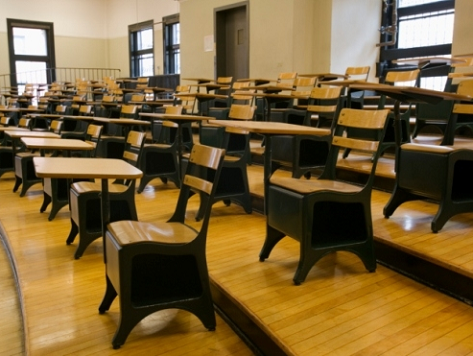
College enrollment in the United States dropped by a half million students in 2012 compared to 2011, according to a report released by the U.S. Census Bureau.
The Daily Mail reports that the overall number of college students decreased by 419,000, with the largest drop being in students who are 25 and older.
Enrollment by Hispanic students in U.S. colleges and universities rose, however, by 15 percent from 2011 to 2012. Hispanics now account for 17 percent of the total student population, which is an increase from 11 percent in 2006.
“This increase in the number of Hispanics enrolled in college can be attributed to the combination of an increase in the adult Hispanic population and their climbing likelihood of being enrolled,” Julie Siebens, a statistician for the Census Bureau, said in a statement.
The Census Bureau report, entitled “School Enrollment: 2012,” came as President Obama completed a two-day tour during which he intended to propose ways to “fundamentally rethink and reshape” the higher education system in the U.S.
“We’ve got a crisis in terms of college affordability and student debt,” Obama said during a stop at the State University of New York at Buffalo. “We can’t price the middle class, and everybody working to get into the middle class, out of an education.”
Obama proposed a college rating system that would help students decide which colleges would provide the best return for their tuition money spent.
At the same time, a new report by the U.S. Department of Education’s National Center for Education Statistics (NCES) found the federal government provided 71.4 percent of full-time college students with some form of taxpayer-funded aid for their education.
The NCES report indicates that in 2011-2012, 55.2 percent of full-time college students took out federal student loans, 47.4 percent received a federal grant, and 10.5 percent participated in a federally-sponsored work study program. Full-time college students received, on average, $10,500 in federal aid during that academic year.
The notion that college “score cards” could be implemented, as Obama suggested, raises concern for those who lobby for universities.
As Tim Carney at the Washington Examiner wrote in August, federal subsidies come with a price:
The university lobby doesn’t like Washington deciding who’s doing a good job, and how — for good reason.
“Those sorts of discussions tend to become very political,” Terry Hartle, the top lobbyist at the American Council on Education, told Bloomberg.
Would anyone be surprised to see Ohio State and University of Florida get gold stars and outsize federal subsidies in presidential years?
Measuring “quality education” is something best left to the students and their parents. How will politicians handle this task? When Republicans are in charge, will they follow the lead of Sen. Tom Coburn, R-Okla., and declare social science to be pseudoscience? Will Oberlin, Wesleyan and other conspicuously leftward-leaning colleges see their federal money dry up under President Marco Rubio?
And conservative Christian colleges will have to fear a liberal administration. Will Hillary Clinton’s Department of Education punish Christendom College for spending too much time on Thomas Aquinas? Or whack Thomas Aquinas College for having too few minority and women authors on the reading list?
The president’s plan, as Lindsey Burke at the Heritage Foundation wrote, is to “tie federal student aid to the new rating system by giving larger Pell Grants and lower student loan interest rates to students who enroll in colleges that fare well on the federal scorecard.”
As Burke concludes, however, “The logical outcome is a system that has the federal government handing out subsidies based on a rating system designed by the people handing out the funding. What could possibly go wrong?”

COMMENTS
Please let us know if you're having issues with commenting.